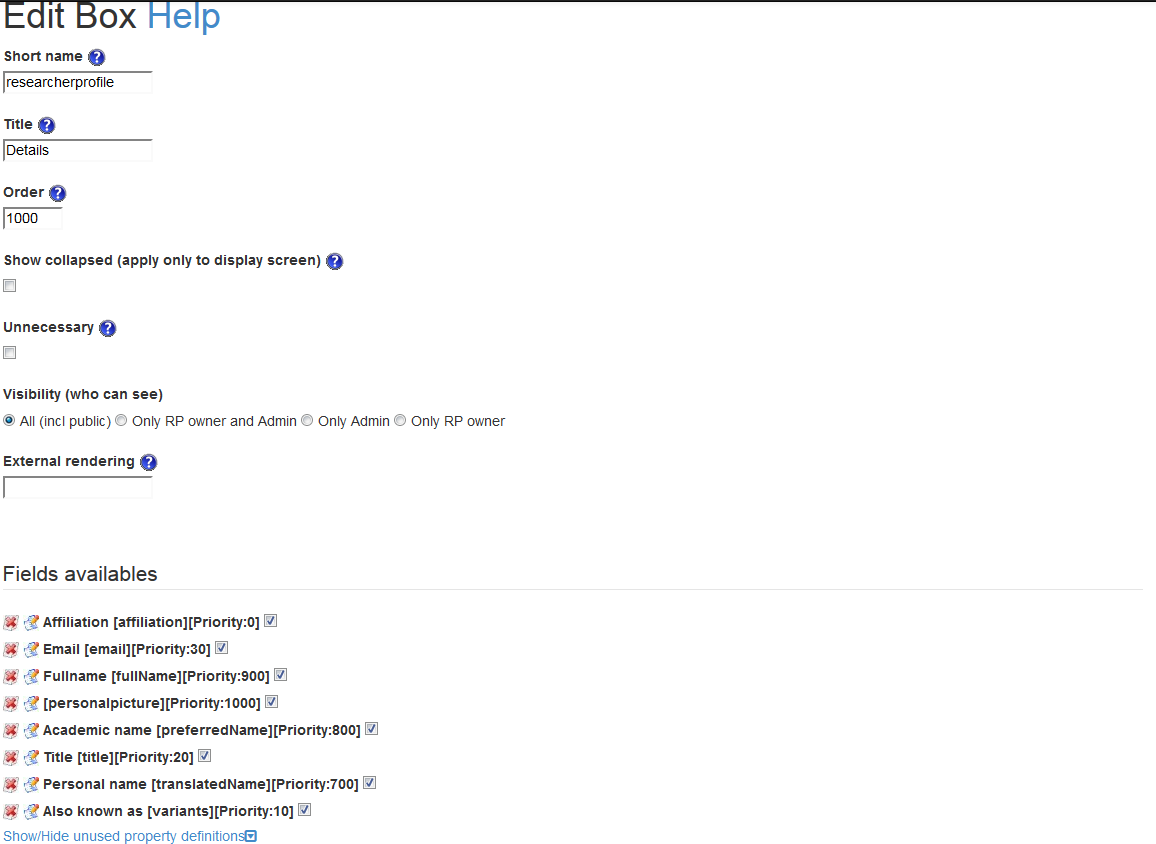
A box is a group of metadata that are shown/edit together. In this section is possible to see all the boxes configured in the system, edit the current configuration for any box or add a new one.
For each one, the system other than the usual edit and remove icons can show two special “JSP icon”:
Custom JSPs are normally used when you want to override the out-of-box layout produced by the system, see “Custom JSPs” for further information.
By clicking on the “edit” option of a box with JSP icon, the system shows the following mask:

The external rendering field contains the name of the custom JSP page, if any, to use for the box rendering. In the example a rpcerif.jsp file needs to be placed in the dspace-cris/jdyna/custom folder of the webapp.
If show collapsed is flagged, the box will be shown collapsed in the public view and the user will need to click the box title to see the content.
The unnecessary flag exclude the box from the evaluation of the Tab content, if a Tab has not content the tab is hidden.
In the fields available container are shown all the already defined fields. Ticked fields are included in the box. By default, only the fields in the box are shown, to see the other available fields you need to click on the Show/Hide other fields link.
From the edit/create box form is possible to create new fields.
The following image shows the “edit” option of a box configuration. The field definition menu is placed at the bottom of the page (look at the red circle in the figure).
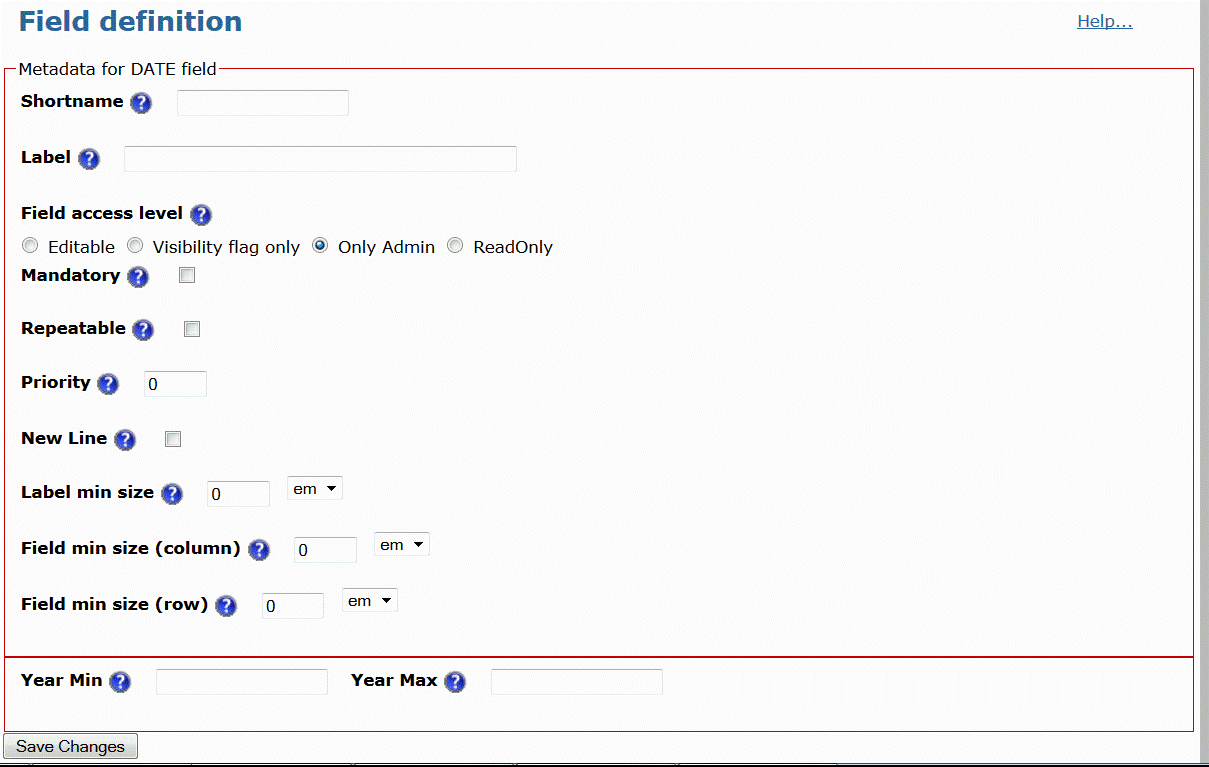
The available data type are: DATE, TEXT, COMPLEX, LINK and FILE other than reference to other CRIS objects.
The basic set of metadata that define any type of field is enclosed into the upper red frame and this set includes: Shortname, Label, Field access level, Mandatory, Repeatable, Priority, New Line, Label min size and Field min size for row and column.
A field is determined by the following metadata:
Two extra elements are specific for the Date field:

Three extra elements are specific for the Text field:
It is a nested object made up of one or more data types. As the next figure shows, the user has the possibility to add every kind of element to be nested (a text, a date, a link, a file, a researcher profile pointer, a project pointer, an organization unit pointer, a DO pointer), each one with its specific form explained in this documentation.
The basic set of metadata in the upper red square of the complex type are the same of the previously mentioned fields, except for the last one named “Inline or tabulized”: when it is checked it means that data are not shown inside a table, otherwise when unchecked data are shown in table format.
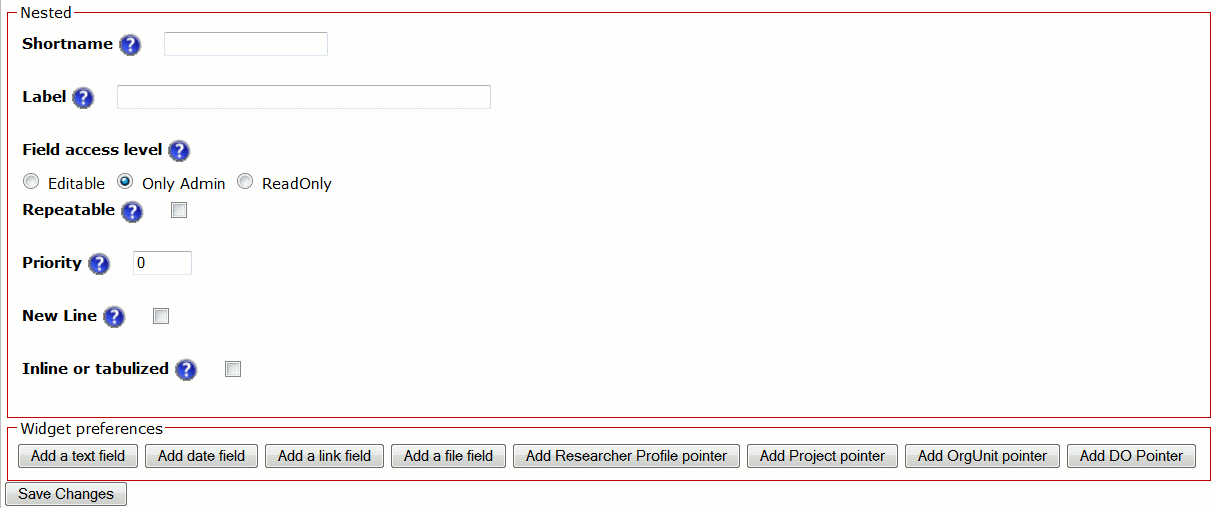
data type allows to create an hypertext field. There are two specific elements:
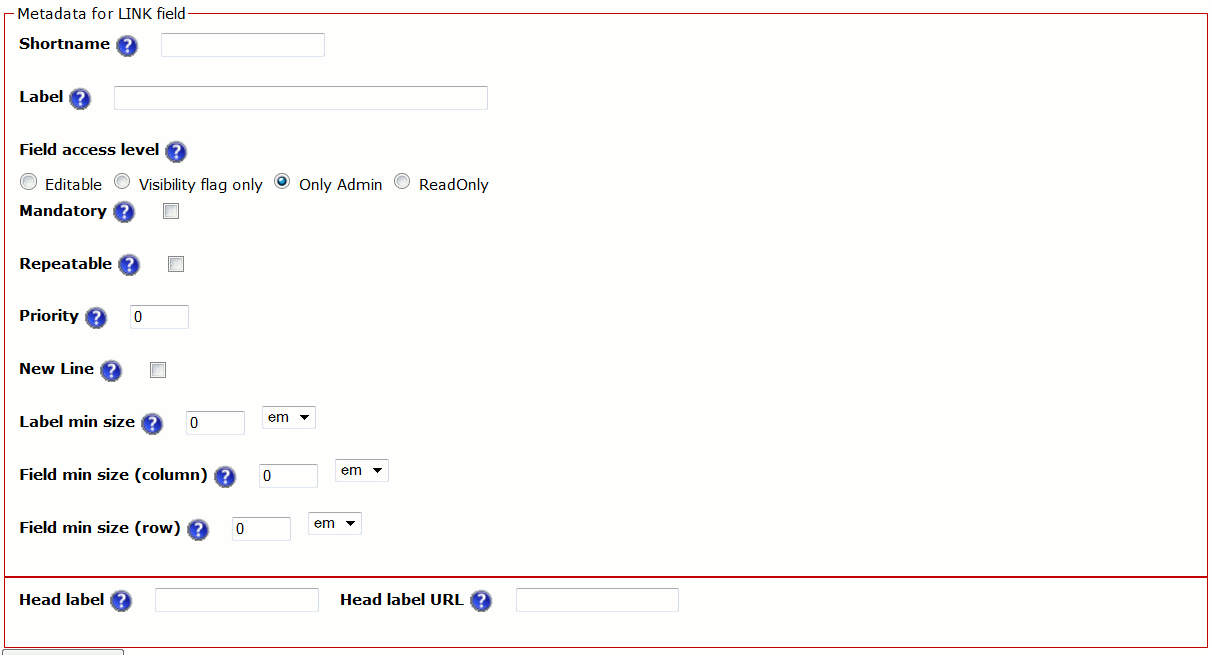
data type allows to upload a file, with the set of metadata shown in the next figure.
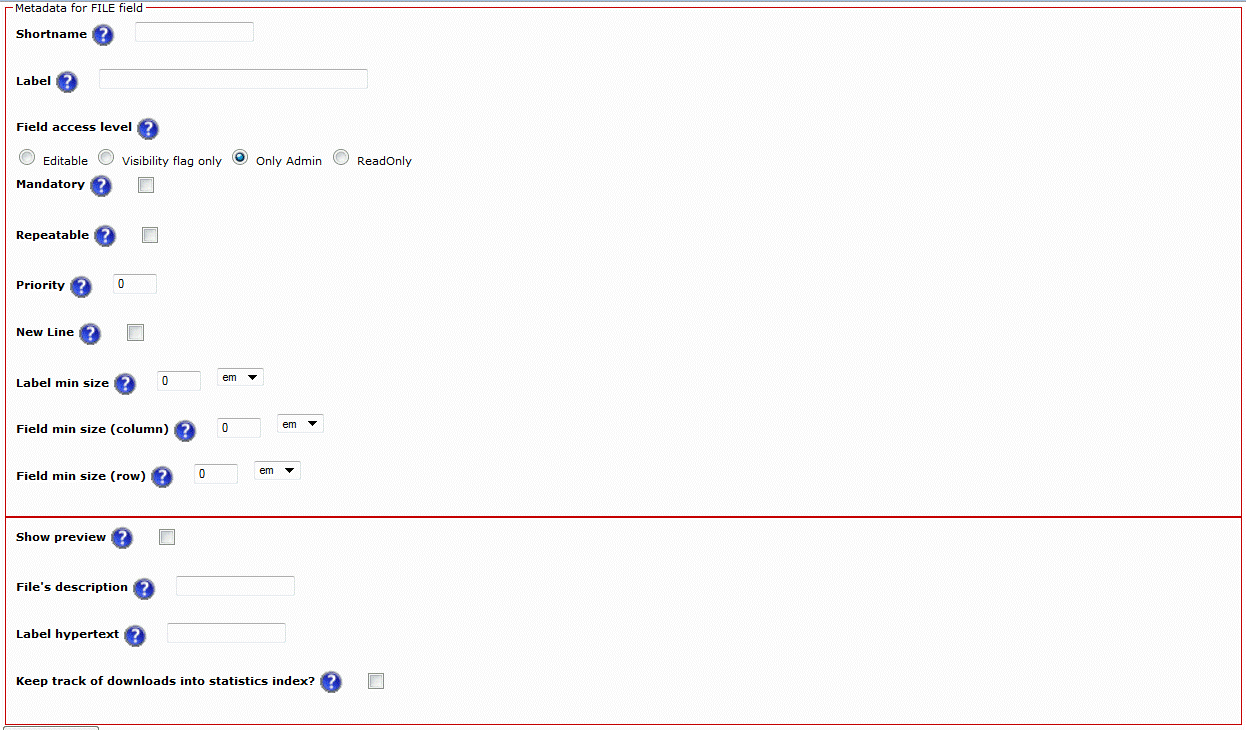
Basic metadata are the same as above, whereas specific metadata for the file data type are the following:
It is also possible to create four other types of field:
These functionalities allow to set up a relation between a researcher (assuming that we are managing researcher page fields) and another entity, via the form reported in the following figure:
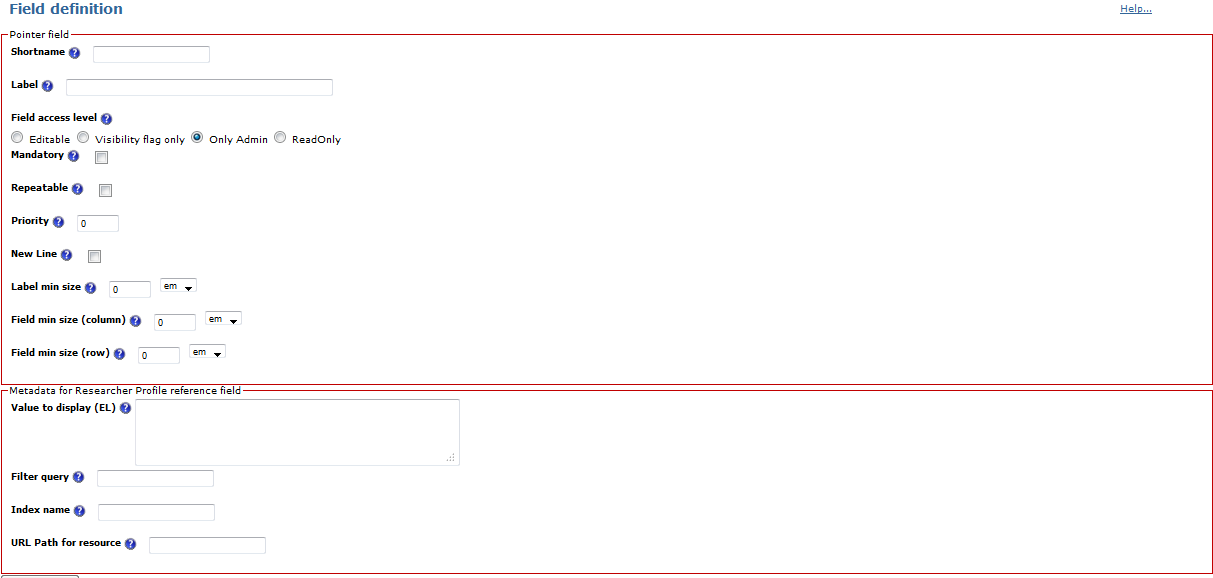
Other than the basic list of metadata there are the following specific elements:
For example: cris/uuid/${displayObject.uuid}
[BA1]Add details about dropdown, radio buttons and custom rendering